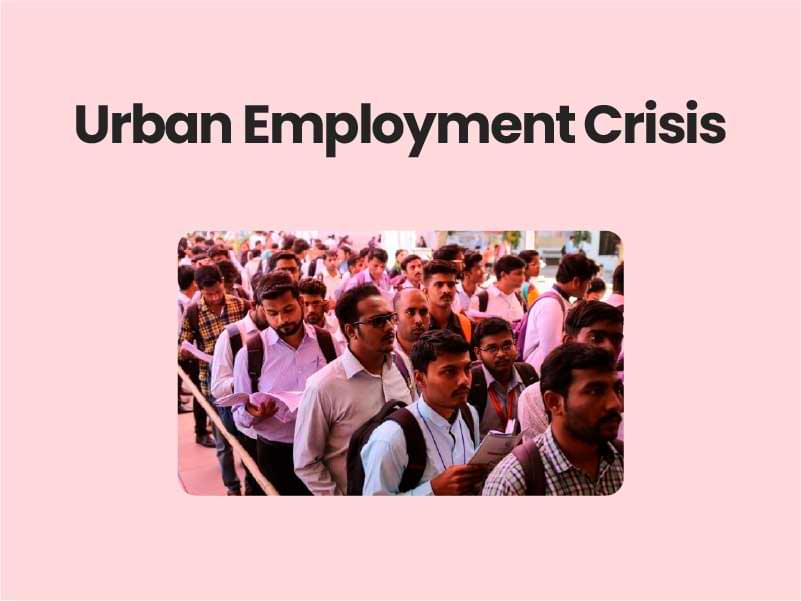Companion@360 → 7 Month programme to sharpen your writing skills → REGISTER NOW

Urban Employment Crisis
Urban unemployment crept up to 9.83% in August as against 9.15% in July, according to monthly unemployment data released by CMIE. The overall national unemployment rate was at 8.35% in August as against 7.43% . India was gradually getting gripped in the pandemic, but is far higher in the pre-covid months like February, January and December when the national joblessness rate was hovering between 7.22% and 7.76%.
Urban Unemployment:
Urban Unemployment is mainly of three types:
- Industrial Unemployment:
- If a person has to remain unemployed for a given period due to the changes in industrial sector, such a condition is called industrial unemployment.
- For example, the people who migrate from rural area, in search of employment, are semi-literate and have no special training and skill.
2. Educated Unemployment:
- When a person is educated and is not able o find a suitable and efficient job for himself.
- This also occurs when there is a large number of graduates or postgraduates, but limited job opportunities and limited companies.
3. Technological Unemployment:
- Technological unemployment occurs when developments in technology and working practices cause some workers to lose their jobs.
- Technological unemployment is considered to be part of a wider concept known as structural unemployment.
UPSC Prelims Mock Test
Challenges to Employment:
- Vulnerable employment: According to the International Labour Organization, of the 535 million labour force in India in 2019, some 398.6 million have poor quality jobs. Further, the lockdown exposed the state of vulnerable employment in urban low-end informal jobs.
- Reverse Migration
- Working poors are increasing in India.
- Slowdown in Major Employment Generating Sector.

Government Initiatives:
- Garib Kalyan Rojgar Abhiyaan’ launched in June: It (aimed to provide livelihood opportunities in rural India) could be an immediate relief, the ₹50,000-crore employment scheme cannot be a substitute for decent urban jobs. Given the structure of the economy and demographic profile, it is important to focus on reducing the vulnerabilities of urban informal jobs in the long run.
- Self Employment Programme of urban poor
- Mahatma Gandhi Employment Guarantee Act
Way Forward:
- To implement employment-intensive investment policies.
- Prioritising Urban Infrastructure
- Focusing on rural development to increase employment opportunities in rural areas and to enhance the provision of services like education, health, electricity and water and sanitation services are effective means to control rural to urban migration.
- The focus on urban employment generation programmes.
- Private investments need to be facilitated by conducive contractual relations between labour and capital.
- Enterprise formation needs to be an integral part of the strategy, with converging interests for workers and entrepreneurs on issues related to technology and productivity enhancement.
- Small and micro-enterprises, the fulcrum of industrialisation, need extra support to balance the interests between labour and capital as neither have collective bargaining powers.
- Prioritise urban infrastructure as it accounts for a large share of total investments in the local economy.

